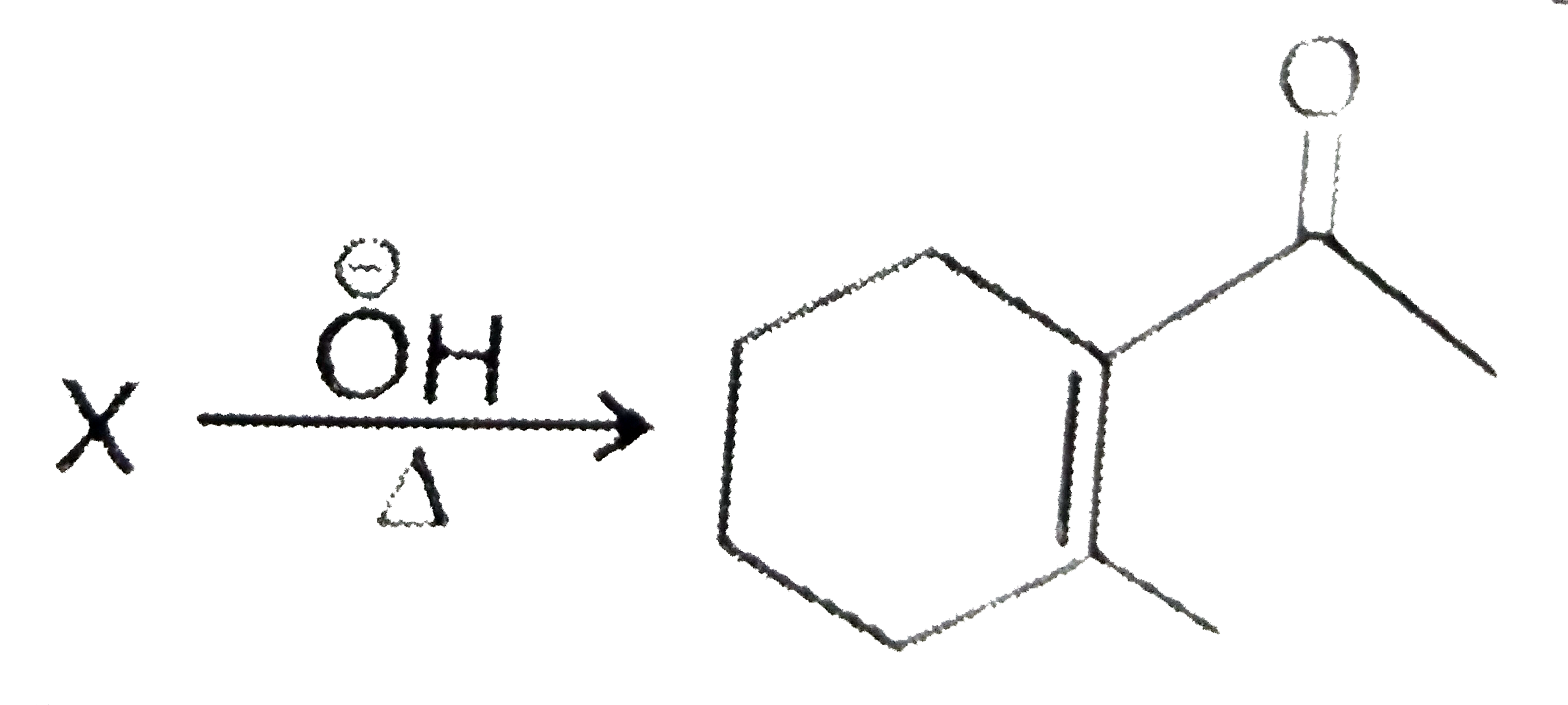Describe aldol condensation.
Step-by-Step Text Solution for Aldol Condensation
Step 1: Definition of Aldol Condensation
Aldol condensation is a reaction that occurs between aldehydes or ketones that contain at least one alpha hydrogen atom. This reaction involves the formation of a β-hydroxy aldehyde or ketone, which can further dehydrate to form an α,β-unsaturated carbonyl compound.
Step 2: Identification of Alpha Hydrogen
In an aldehyde or ketone, the carbon atom adjacent to the carbonyl group (C=O) is known as the alpha carbon. The hydrogen atoms attached to this alpha carbon are referred to as alpha hydrogens. For aldol condensation to occur, at least one alpha hydrogen must be present.
Step 3: Base-Catalyzed Deprotonation
In the presence of a base (commonly dilute sodium hydroxide, NaOH), the alpha hydrogen is removed, generating an enolate ion. The enolate ion is stabilized due to resonance with the carbonyl group, making the alpha hydrogen acidic and facilitating its removal.
Step 4: Nucleophilic Attack
The enolate ion acts as a nucleophile and attacks the carbonyl carbon of another molecule of the aldehyde or ketone. This results in the formation of a tetrahedral intermediate, where the pi bond of the carbonyl group shifts to form a negatively charged oxygen atom.
Step 5: Protonation to Form β-Hydroxy Aldehyde/Ketone
The tetrahedral intermediate collapses, leading to the formation of a β-hydroxy aldehyde or ketone. A proton (H+) is transferred from the base to the negatively charged oxygen, resulting in the final aldol product.
Step 6: Dehydration to Form α,β-Unsaturated Carbonyl Compound
Upon heating, the β-hydroxy aldehyde or ketone can undergo dehydration (loss of water) between the alpha and beta carbons. This results in the formation of an α,β-unsaturated carbonyl compound, which is the final product of the aldol condensation.
Summary of the Reaction
1. Starting Materials: Aldehyde or ketone with alpha hydrogen.
2. Base Reaction: Base removes alpha hydrogen to form enolate.
3. Nucleophilic Attack: Enolate attacks another carbonyl compound.
4. Formation of β-Hydroxy Product: Protonation leads to β-hydroxy aldehyde/ketone.
5. Dehydration: Heating leads to α,β-unsaturated carbonyl compound.
---
Aldol condensation is a reaction that occurs between aldehydes or ketones that contain at least one alpha hydrogen atom. This reaction involves the formation of a β-hydroxy aldehyde or ketone, which can further dehydrate to form an α,β-unsaturated carbonyl compound.
In an aldehyde or ketone, the carbon atom adjacent to the carbonyl group (C=O) is known as the alpha carbon. The hydrogen atoms attached to this alpha carbon are referred to as alpha hydrogens. For aldol condensation to occur, at least one alpha hydrogen must be present.
In the presence of a base (commonly dilute sodium hydroxide, NaOH), the alpha hydrogen is removed, generating an enolate ion. The enolate ion is stabilized due to resonance with the carbonyl group, making the alpha hydrogen acidic and facilitating its removal.
The enolate ion acts as a nucleophile and attacks the carbonyl carbon of another molecule of the aldehyde or ketone. This results in the formation of a tetrahedral intermediate, where the pi bond of the carbonyl group shifts to form a negatively charged oxygen atom.
The tetrahedral intermediate collapses, leading to the formation of a β-hydroxy aldehyde or ketone. A proton (H+) is transferred from the base to the negatively charged oxygen, resulting in the final aldol product.
Upon heating, the β-hydroxy aldehyde or ketone can undergo dehydration (loss of water) between the alpha and beta carbons. This results in the formation of an α,β-unsaturated carbonyl compound, which is the final product of the aldol condensation.
1. Starting Materials: Aldehyde or ketone with alpha hydrogen.
2. Base Reaction: Base removes alpha hydrogen to form enolate.
3. Nucleophilic Attack: Enolate attacks another carbonyl compound.
4. Formation of β-Hydroxy Product: Protonation leads to β-hydroxy aldehyde/ketone.
5. Dehydration: Heating leads to α,β-unsaturated carbonyl compound.
Topper's Solved these Questions
- ALDEHYDES, KETONES AND CARBOXYLIC ACIDSBOOK - ICSECHAPTER - ALDEHYDES, KETONES AND CARBOXYLIC ACIDSEXERCISE - ISC EXAMINATION QUESTIONS (PART-II DESCRIPTIVE QUESTIONS) (CARBOXYLIC ACIDS)
99 Videos
- ALCOHOLS, PHENOLS AND ETHERS BOOK - ICSECHAPTER - ALCOHOLS, PHENOLS AND ETHERS EXERCISE - ISC EXAMINATION QUESTIONS
25 Videos
- APPENDIX II ( TYPICAL CONVERSIONS)BOOK - ICSECHAPTER - APPENDIX II ( TYPICAL CONVERSIONS)EXERCISE - AROMATIC CONVERSIONS
98 Videos
Similar Questions
A : Ethanal undergoes aldol condensation.
R : Ethanal has four α-H atoms.
View SolutionEthanal undergoes aldol condensation but trichloroethanal does not.
View SolutionEthanal undergoes aldol condensation but trichloroethanal does not.
View SolutionEthanal undergoes aldol condensation but trichloroethanal does not.
View SolutionWhat is the product of intramolecular aldol condensation reaction?

View SolutionShow how cinnamaldehyde is prepared by crossed aldol condensation ?
View SolutionBenzaldehyde undergoes aldol condensation in an alkaline medium.
View SolutionWhich undergoes aldol condensation in the presence of dilute NaOH?
View SolutionAssertion : All aldehydes donot take part in aldol condensation.
Reason : In th aldol condensation, carbanion is generated by the abstraction ofα-H atopm by the base.
View SolutionConsider following intramolecular aldol condensation reaction

X can be
View Solution
